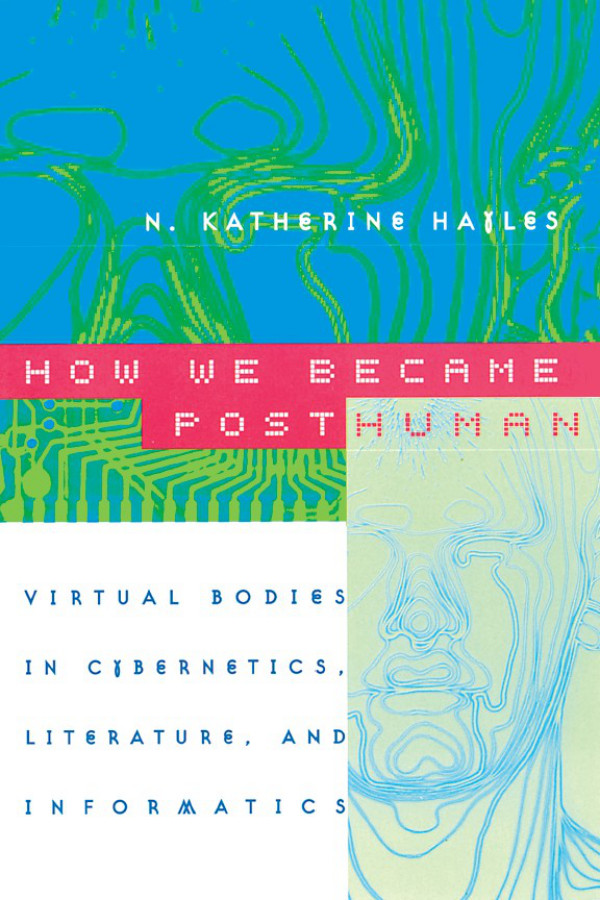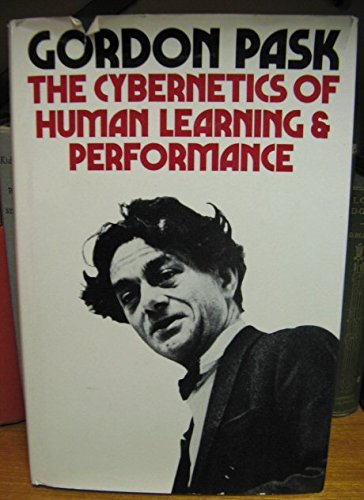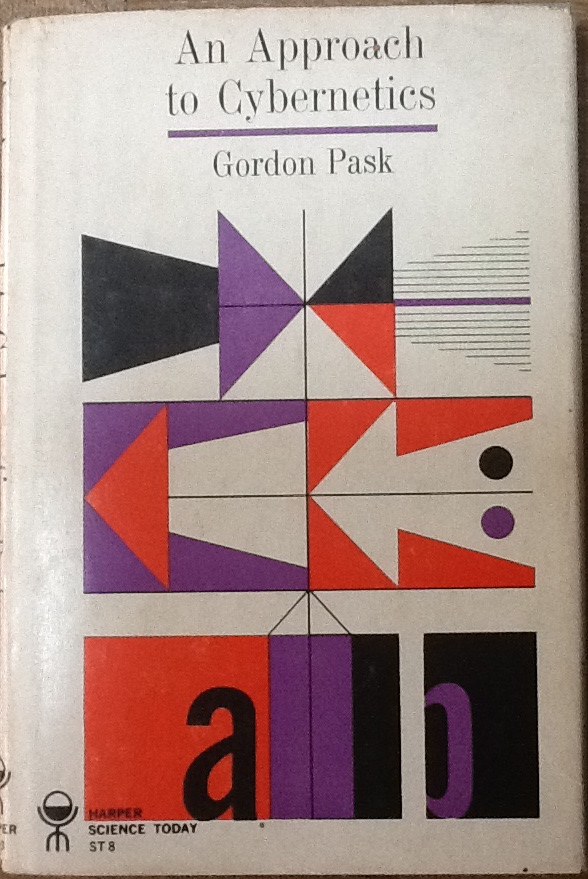N. Katherine Hayles: How We Became Posthuman: Virtual Bodies in Cybernetics, Literature, and Informatics (1999)
Filed under book | Tags: · android, artificial intelligence, autopoiesis, body, cellular automata, computing, cybernetics, cyborg, epistemology, literature, posthuman, posthumanism, technology, virtual reality

“In this age of DNA computers and artificial intelligence, information is becoming disembodied even as the “bodies” that once carried it vanish into virtuality. While some marvel at these changes, envisioning consciousness downloaded into a computer or humans “beamed” Star Trek-style, others view them with horror, seeing monsters brooding in the machines. In How We Became Posthuman, N. Katherine Hayles separates hype from fact, investigating the fate of embodiment in an information age.
Hayles relates three interwoven stories: how information lost its body, that is, how it came to be conceptualized as an entity separate from the material forms that carry it; the cultural and technological construction of the cyborg; and the dismantling of the liberal humanist “subject” in cybernetic discourse, along with the emergence of the “posthuman.”
Ranging widely across the history of technology, cultural studies, and literary criticism, Hayles shows what had to be erased, forgotten, and elided to conceive of information as a disembodied entity. Thus she moves from the post-World War II Macy Conferences on cybernetics to the 1952 novel Limbo by cybernetics aficionado Bernard Wolfe; from the concept of self-making to Philip K. Dick’s literary explorations of hallucination and reality; and from artificial life to postmodern novels exploring the implications of seeing humans as cybernetic systems.
Although becoming posthuman can be nightmarish, Hayles shows how it can also be liberating. From the birth of cybernetics to artificial life, How We Became Posthuman provides an indispensable account of how we arrived in our virtual age, and of where we might go from here.”
Publisher University of Chicago Press, 1999
ISBN 0226321460, 9780226321462
350 pages
PDF (updated on 2012-7-24)
Comment (0)Gordon Pask: The Cybernetics of Human Learning and Performance: A Guide to Theory and Research (1975)
Filed under book | Tags: · abstract machine, cybernetics, learning, machine

“This book assumes a background knowledge commensurate with having read its predecessor An Approach to Cybernetics (1961) of which some passages are a direct continuation. All that is needed from a system/cybernetic point of view is available in Ashby’s lucid and still up-to-date Introduction to Cybernetics (1965), though the reader with a bent and liking for mathematics will find Glushkov’s Introduction to Cybernetics (1966) profound and comprehensive (the nearly identical title is due to translation). There is a glossary covering all essential technical terms at the end of the book. Readers may find this helpful, not so much because of obscure symbolism (very little is employed) but because ordinary language phrases are used, from time to time, with rather exact meaning; in order to avoid symbols. This trick is played quite often with logical and mathematical terms; sometimes with the relatively comprehensible jargon of psychology, educational science, and philosophy. The other offending speciality is electronics. Knowledge of the subject is unimportant, since the function of components is explained or illustrated. Some otherwise abstract notions are made tangible by the description of electrical machinery; people who are versed in the field may find the details interesting and amusing (especially in Chapter 5 where methods are quaintly redolent of the late 1950s and early 1960s). But there is no need to labour these points; only the function of the machinery bears directly upon the main theme.” (from Preface)
Publisher Hutchinson Educational, 1975
ISBN 0091194903, 9780091194901
347 pages
via pangaro.com
PDF (28 MB, updated on 2017-10-25)
Comment (0)Gordon Pask: An Approach to Cybernetics (1961/1968)
Filed under book | Tags: · cybernetics, engineering, environment, machine, technology

“This book is not for the engineer content with hardware, nor for the biologist uneasy outside his specialty; for it depicts that miscegenation of Art and Science which begets inanimate objects that behave like living systems. They regulate themselves and survive: They adapt and they compute: They invent. They co-operate and they compete. Naturally they evolve rapidly.
Pure mathematics, being mere tautology, and pure physics, being mere fact, could not have engendered them; for creatures to live, must sense the useful and the good; and engines to run must have energy available as work: and both, to endure, must regulate themselves. So it is to Thermodynamics and to its brother SUM(p) log p, called Information Theory, that we look for the distinctions between work and energy and between signal and noise.
For like cause we look to reflexology and its brother feedback, christened Multiple Closed Loop Servo Theory, for mechanical explanation of Entelechy in Homeostasis and in appetition. This is that governance, whether in living creatures and their societies or in our lively artifacts, that is now called Cybernetics.
But under that title Norbert Wiener necessarily subsumed the computation that, from afferent signals, forecasts successful conducts in a changing world.
To embody logic in proper hardware explains the laws of thought and consequently stems from psychology. For numbers the digital art is as old as the abacus, but i came alive only when Turing made the next operation of his machine hinge on the value of the operand, whence its ability to compute any computable number.
For Aristotelian logic, the followers of Ramon Llull, including Leibniz, have frequently made machines for three, and sometimes four classifications. The first of these to be lively computes contingent probabilities.
With this ability to make or select proper filters on its inputs, such a device explains the central problem of experimental epistemology. The riddles of stimulus equivalence or of local circuit action in the brain remain only as parochial problems.
This is that expanding world of beings, man-made or begotten, concerning which Ross Ashby asked, ‘How can such systems organize themselves?’ His answer is, in one sense, too general and its embodiment, too special to satisfy him, his friends or his followers.
This book describes their present toil to put his ideas to work so as to come to grips with his question.” (Warren S. McCulloch, Preface)
With a preface by Warren S. McCulloch
Publisher Hutchinson & Co, London, 1961
This edition March 1968
ISBN: 0090868102, 0090868110
128 pages
via pangaro.com
PDF (updated on 2012-7-16)
Comment (0)
